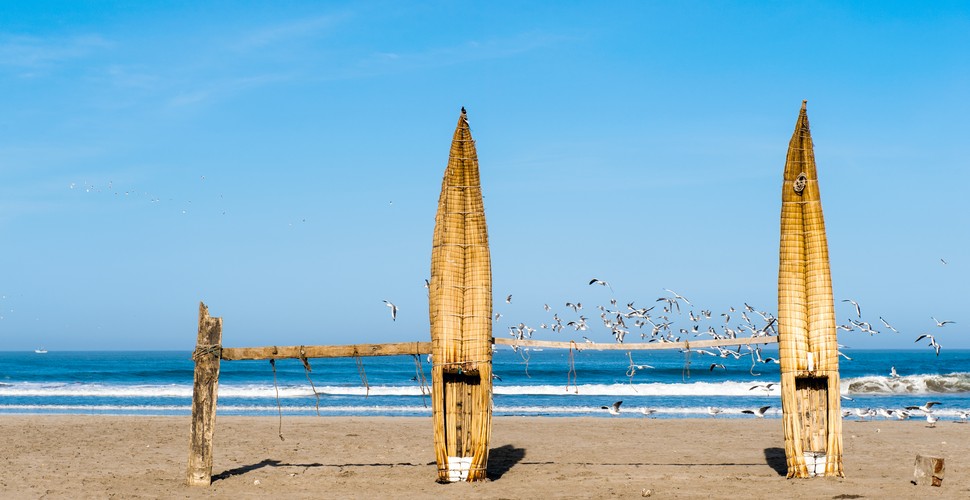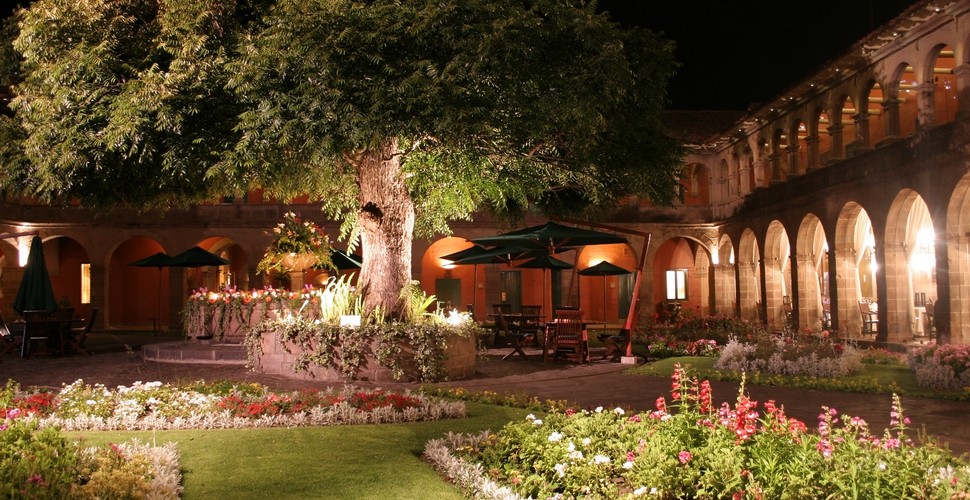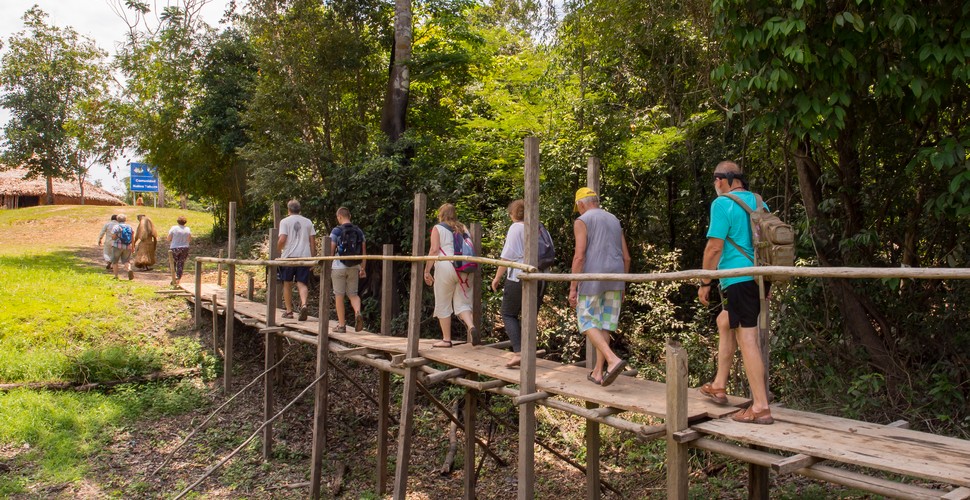

Claire Dean
Travel in South America is a joy to behold. The rich variety of destinations, experiences, landscapes and geography fascinated me so much, that I chose to relocate here, over 20 years ago! The best thing I ever did! Allow me to share my knowledge and passion for Central and South America with you and help you plan your holiday of a lifetime!

How Much Should I Budget for My Trip to Peru?
Written by:Claire Dean
Last Update: 2025-01-27
Huanchaco, Peru
Travel Costs Guide for a Trip to Peru.
Not only is Peru a fantastic destination for adventure seekers and nature lovers, but it is also one of the most affordable ones in South America. Perhaps your biggest expense, which you will need to account for well in advance, is your airline tickets. Flight prices to Peru are very diverse and based on your departure location and the time of year you’re traveling (high vs low season). To find affordable flights to Peru, it might be wise to use platforms that allow you to compare airline tickets, such as Skyscanner.
The Peruvian Currency
Keeping track of your spending is of vital importance. If you don’t know how much the Peruvian Nuevo Sol is worth, you’ll have difficulty understanding how much cash you’re spending. Get to know the local currency and, just as importantly, stop comparing Peruvian prices with prices back home. The cost of living in Peru is lower than in most European countries and the USA. There are bargains to be had in Peru, but avoid buying for “buying's sake” It all adds up.
Andean Girl
What currency is accepted in Peru?
Nuevo Peruvian Soles and US Dollars are widely accepted in Peru. However, there may be a slight disadvantage when paying with USD. The cost of a product or service could be slightly higher if you pay in USD.USD is generally used for more considerable expenses such as tours, hotels, etc.; otherwise, stick to the local currency.
Peruvian coins
The next things to consider are the places you want to explore in the country, as this will be a major factor when calculating your overall travel costs. For example, the prices for a fully customized 9-day trip to Peru, including transportation for the tours, an English-speaking guide, meals, accommodation in an Amazon lodge, and tickets to Machu Picchu, start at over $1,000 USD and then reach the sky, depending on the experience and price range you are looking for.
Festival in Pisaq
Accommodation
Peru offers all different types of accommodation from party hostels to upmarket chic hotels. Here is the general cost of what you should expect to pay per night for accommodation in Peru. (Based on a double room and 2 people sharing).
- Dorm Room or Hostel $8USD to $35 USD
- 3-star hotel $75- $150
- 4-star hotel $180-$300 USD
- Boutique Hotel $300-$500 USD
- Luxury Hotel USD 500 USD and above
Cusco Luxury Hotel
Transport
Peru has a good public transportation system and using public transport is one of the cheapest ways to explore the country. Buses connect most major cities and tourist destinations. The cost of your bus ticket will generally depend on the bus company, the route, and the extras that they offer (e.g. air-conditioning or onboard meals).
Hopping on a train is another great option, specifically, if you’re trying to reach Machu Picchu. There are two rail companies operating trains from Cusco to Aguas Calientes (the town closest to Machu Picchu) – Peru Rail and Inca Rail. A one-way budget train ticket from Cusco to the ancient site of Machu Picchu will set you back between $70 USD and $85 USD. Both companies further offer several different travel classes with added extras such as air conditioning and complimentary snacks. For those who want to travel to Machu Picchu in the lap of luxury, The Hiram Bingham Train service is around $ 900 USD to get to Machu Picchu in style.

Titicaca Train
Top Transport Tip
Use Long Distance Buses in Peru
Flights aren't too expensive in Peru, but hopping from one city to the next will soon put a dent in your budget. If time allows, use long-distance buses to get from A to B. Not only will you see more of Peru, but you'll also arrive at your destination with extra cash to spend on tours and entertainment. However, one important thing to remember is to stick with the midrange and top-end Peruvian bus companies. You will travel long distances (Over 24 hours on some routes). The cheaper buses are not safe and should be avoided.
Long Distance Bus Travel
Meals
Peru is a foodie paradise and eating/drinking all the local goodness here is a huge part of your travel experience to come! If you eat locally, which you definitely should, then food and drink here is very affordable too. Most hostels and hotels in Peru include breakfast in their prices. While this is often a simple affair of cereal, fruit, yogurt, and toast, it’s an ample start to the day and one less meal to worry about.
When it comes to lunch, fresh juice plus a sandwich in a local market will set you back just $1-3 USD, as will a good espresso coffee at a tourist café.
The best value here is to buy a 5L bottle and then decant it into a smaller metal water bottle you carry with you during the day. This saves money and plastic waste.
Beers are cheap in Peru too, especially when bought in a store, or at a cheap local place, costing $1-2 each.
For dinner, if you eat in local cafes/restaurants, you can expect to pay around USD 5 for a decent feed. If you want to splash and out in a fairly decent restaurant in Peru however, which you can certainly do in Lima and Cusco, then prices start from around USD 20 and then the sky is the limit!
Beer is around s/.10 PEN or a latte is about the same. A glass of wine can start from s/. 25 PEN Bottled water is 1.50 PEN. A cocktail is around s/.20 PEN and up, though many restaurants have extended happy hour specials (sometimes even all day).
If you plan on cooking, expect to pay s/.150 – s/.200 PEN per week for groceries such as pasta, rice, seasonal produce, and some meat. The best places to shop are the local markets, though Plaza Vea is the big grocery store chain with affordable prices. However, given how cheap food is here, it’s best always to eat out. Buy snacks and fruit at the markets but eat out all other meals.
Cheap Eats in Peru
Touristic restaurants, especially in the major cities such as Lima, Cusco and Arequipa, are considerably more expensive than the typical restaurants frequented by Peruvians. A local person will always know where to eat and where the best dining deals are. Eat where the locals go, and you’ll be surprised at how well you can eat in Peru on a budget. Shoestring travelers should make the most of lunch in Peru when big, three-course meals are at meager prices.
Causa Rellena
Entrance fees and guides
Entrance fees and guides can be hard to price up in Peru because if you take a tour or a guided trek to many of the most popular ruins and sights, these will be included in the price.
Of course, there are many free and cheap attractions in Peru, but for the main attractions, you will obviously have to spend some cash, especially if it involves a trip to a wonder of the world!
Here are some examples:
- Entrance to Pachacamac Ruins by Lima: USD 4
- Hot Springs Entrance in Colca Canyon: USD 3
- Santa Catalina Monastery Entrance in Arequipa: USD 12
- Entrance to Inca Museum in Cusco: USD 3
- Entrance to Choquequirao Ruins: $18 USD
- Entrance to Machu Picchu: $65 USD
- Cusco Tourist Ticket (10 days): USD 45
This last option is essential if you think you’ll be visiting a lot of the ruins around Cusco as it’s a combined entrance ticket that will save you money in the long run. It covers 16 sights in total, both in and around Cusco and The Sacred Valley. The 10-day ticket is good if you have a decent amount to explore all this city has to offer otherwise, there are a couple of smaller circuit 1-2 day options too for USD 20.
Top Budgeting Tips on Peru Tours*
Prioritize Tours Wisely
Don’t always assume that a tour is necessary. Many historical sites and natural attractions in Peru are easy to reach by public transport, usually a much cheaper option than private tours. You can often hop on a cheap bus and find a local guide when you arrive at your destination. Save the tours for places that are more difficult to reach and trekking tours such as the Inca Trail, where you have to go with an authorized company.
Join a Group
Specialist tours are usually much more expensive if you book a private tour. Excursions such as the Inca Trail are often available in group service. Look to join a group (ask when booking functional groups) or hook up with other travelers for tours or treks. This means that costs are shared and work out cheaper for everyone!
Amazon Lodge Excursion
Our Top Tips For Budgeting in Peru
Watch Out for Scams in Peru
Scams are the enemy of any traveler's budget. Whenever money is involved, be wary. Always check your change, especially at night and in taxis and be aware that false notes are an issue in Peru, and even local people who know their currency well, can be duped. It’s a good idea to learn about the types of scams in Peru and how to avoid them.
Set Prices in Advance
Whenever possible, agree on a price before accepting the service. You might be presented with an unexpectedly large bill if you don't. Peruvian taxis are a prime example. With no meters, it’s up to you to negotiate a price before each cab ride. If you think the fare is too high, find another taxi -- much more accessible than arguing over an inflated price at the end of your trip.
Know How Much to Tip in Peru
Peru isn’t a big-tipping nation, so don’t go blowing your daily budget on unnecessary tips. There are a few occasions when a dividend is expected, such as in midrange to upscale restaurants and touristic services, but don’t feel the need to hand over your loose change to taxi drivers. Peruvian taxi drivers don't expect tips in general.
Reduce your Alcohol intake
Alcohol is a financial black hole for budget travelers, and you might have a worryingly light wallet after a night on the town. When you go out drinking (you’re on holiday, after all), avoid tourist traps, super-trendy hotspots, and expensive shots. Beer is generally the cheapest option in Peru.
Drinks Time!
Learn How to Haggle
Don’t be afraid to haggle over prices in the traditional markets of Peru. Prices generally start high, so it’s your job to settle on a price acceptable to both parties. Also, try negotiating prices for hotel and hostel rooms. You’ll often receive a clear no, but trying is no harm. It’s easier to get a discount if you're staying for more extended periods. For souvenirs, haggle; at the end of the day, the seller will not sell their products if they are making a loss.
Eat Your Breakfast - It Included!
If your hotel has breakfast included, drag your bones out of bed and make the most of it before it’s gone. Breakfasts typically start at about 7 a.m., finish at 9 or 10 a.m., and keep you going till lunchtime.
Peruvian Breakfast
Learn Some Spanish
If you don’t speak Spanish, your ability to negotiate prices, haggle and avoid scams will be severely limited. Spanish lessons can be expensive, but if your Spanish skills are up to scratch, you will save money on your Peru trip.
Familiarize Yourself With ATM Fees in Peru
Find out which ATMs charge the lowest withdrawal fees abroad. Ask your bank for information before you leave home. You may find that your bank is part of the Global ATM Alliance, in which case you might be able to avoid some withdrawal fees. Scotiabank, for example, is part of the alliance and has more than 270 ATMs in Peru.
Buy Souvenirs at the Source
If you want to buy souvenirs, buy at the source or in local markets rather than in touristy shops or airports. The center of Cusco and the Miraflores district of Lima are good examples, with fancy stores selling overpriced items to tourists. Take a short taxi ride to a traditional market, and you’ll probably find the same things for almost half the price. Visit local communities and buy weavings, textiles and handicrafts from the community; this will guarantee the authenticity of the products, and your money goes straight to the productor.
Hand Woven Bags
Use the Internet to Call Home
There are inexpensive internet cafes everywhere in Peru, so there’s little point in making expensive telephone calls to friends and family back home. Most public computers have Windows Live Messenger (MSN Messenger) installed, and install WhatsApp on your cell phone. If your parents aren’t computer savvy, try to give them a brief Messenger or WhatsApp class before you leave. It will save you a lot of money on your travels.
WhatsApp is Free!

















